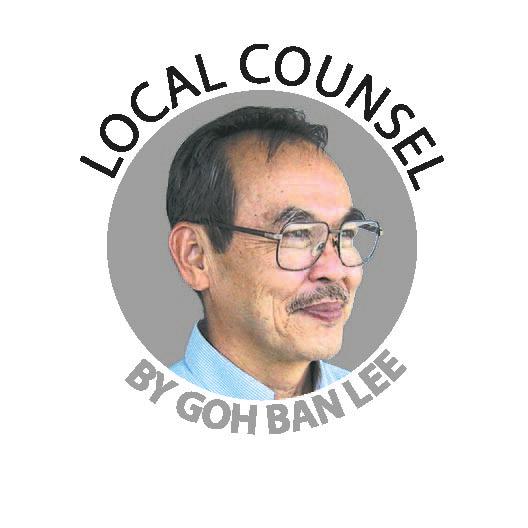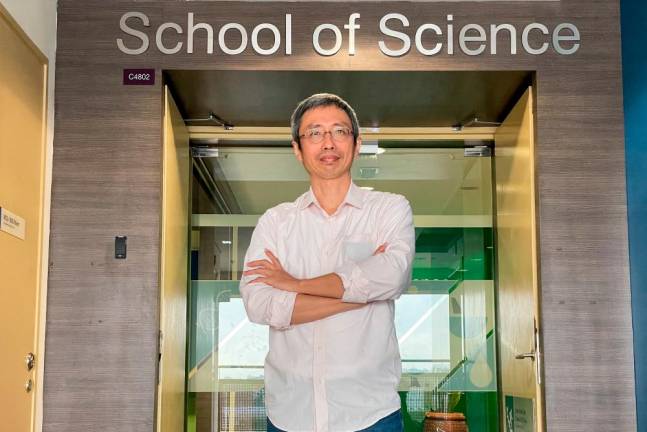WE flew to Chengdu and then took a fast train to Xi’an, followed by a coach to Huashan mountain, one of the five famous sacred mountains in China, and to Langzhong, a smaller ancient city famous for “Baolin” vinegar. Along the way, attractive yellow canola flower fields caught our eye.
My last visit to China was on a conference trip to Shanghai in 2017. This time, 10 of us in a group travelled to Chengdu and Xi’an, two of the largest cities in Western China. I had been to both cities many years ago.
Even casual observers would see that both cities have changed dramatically since then.
Chengdu is the capital of Sichuan Province. It is home to the world famous Giant Panda Breeding Research Base. Here visitors can view the endangered giant pandas in their natural habitat, maintained as such to ensure the best environment for rearing and breeding. Shaded and surrounded by trees and bamboo, it covers 36.5ha.
One can see adult pandas eating bamboo shoots and baby cubs playing and climbing trees. It is a Unesco World Heritage Site.
Another Unesco World Heritage Site near Chengdu is the Leshan Giant Buddha, a 71m tall statue carved out of a cliff. Other places of interest in the region include the ancient Dujiangyan irrigation system which to this day helps drain flood water, irrigate farms and provides water for the province, and Jinli Old Street which features local snacks and artifacts.
The people here are fond of dining out. Sichuan is famous for its spicy tongue-numbing steamboat with lots of Sichuan pepper, known as huajiao.
Any time of the day, there will be people, especially retirees, drinking tea or wine and eating melon seeds, playing cards or mahjong or Chinese chess.
Xi’an is the capital of Shaanxi Province and the former capital of China. It is the ancient Silk Road’s eastern end, and a historical and cultural city of over 3,000 years.
Here, one can find the famed “Bingmayong” (Terracotta warriors), a collection of about 8,000 life-sized, hand-moulded figures depicting the warriors of Qin Shi Huang, the first emperor of China.
Their purpose was to protect the emperor in his afterlife. Each figure varies in height, face shape, hairstyle and uniform according to his rank.
Discovered by villagers digging a well in 1974, it was opened to the public in 1979. The Qin Shi Huang Mausoleum and Terracotta warriors were added to the Unesco Heritage List in 1987.
South of Xi’an stands the Wild Goose Pagoda. Muslim Street is another tourist attraction. It is interesting to stroll along the ancient fortress of Xi’an and marvel at the architectural feats.
China is changing fast. Rapid urbanisation and economic development have resulted in huge increases in the population of cities, and the number of cars. White seems to be a popular colour for new cars and most of the vehicles on the road are the bigger models.
The wide and even pavements in front of shops here easily double the common five-foot ways in Penang.
For new development projects, there are setbacks for open spaces between roads and buildings, so that residents can enjoy more urban amenities like pocket parks.
Surprisingly, even with so many people, there appear to be enough squares and open spaces for them to indulge in outdoor activities like gathering, singing and dancing in the morning, evening or at night.
Generally, the state of cleanliness in these cities has improved compared to years ago. Sanitation workers scoop up rubbish or cigarette butts regularly.
There are also banners and posters to remind people not to litter, and to show dog owners what ought to be done when they take their pets out for walks.
The local authorities not only make sure that the cities are clean, but also emphasise beautification projects such as sculptures, plants and colourful flowers. At this time of the year, one can see peach, pear and magnolia trees in full bloom.
Also, these Chinese cities have embraced technology, which has made life easier for some. Many people use their smartphones for buying items or services.
Our group even saw robots used in restaurants to help waiters carry food from kitchens to dining tables and providing security in shopping malls.
Chinese cities are not perfect, of course. But in these cities local government planners have done a lot to balance rapid urban growth, activities such as tourism to cultural and historical sites, and day-to-day liveability for their residents.
Datuk Dr Goh Ban Lee is interested in urban governance, housing and urban planning. Comments: letters@thesundaily.com










